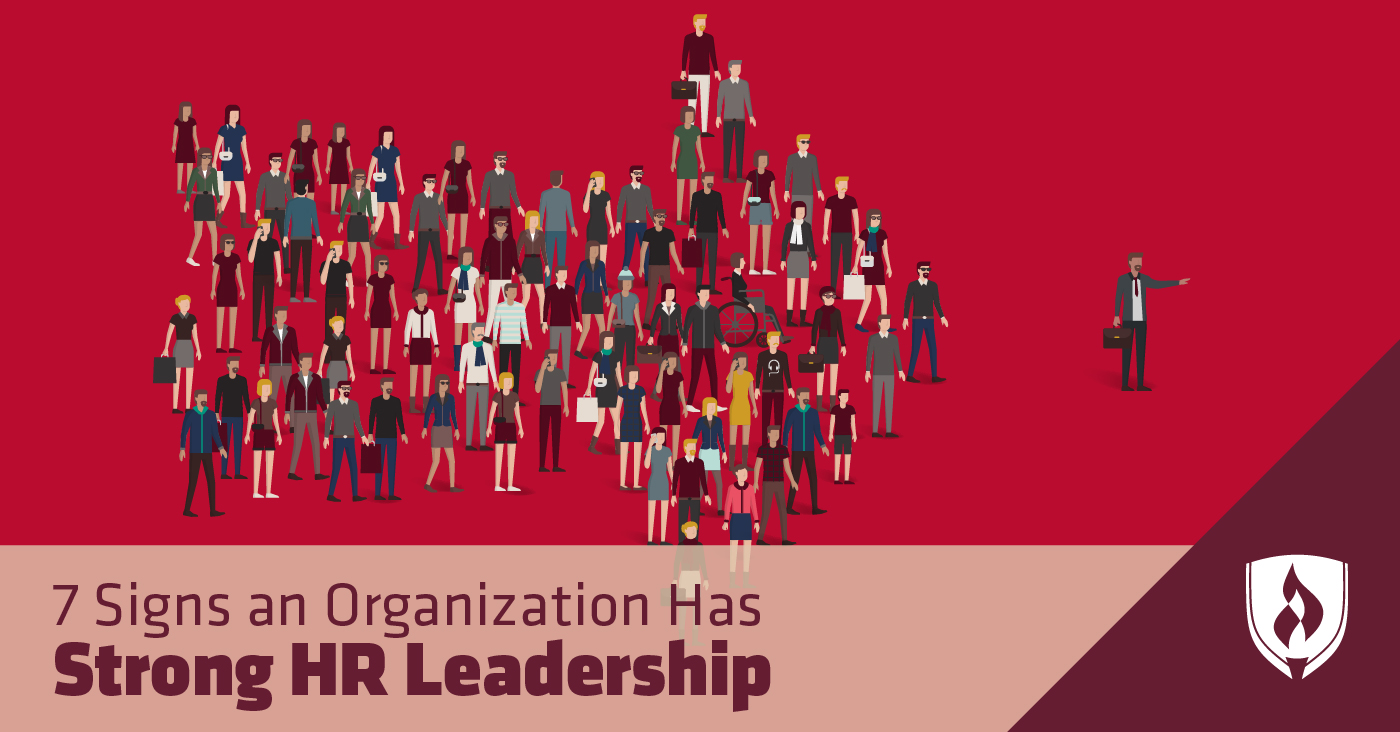
The value of a well-run human resources (HR) department is hard to overstate. The work they do touches every corner of an organization from the highest rungs of senior leadership on down. With such a prominent position in a company’s structure, it’s no surprise many place an emphasis on developing a culture of strong HR leadership.
But what does an organization with healthy HR leadership look like? We enlisted HR professionals to help us identify the signs of a well-run HR department—read on to learn what they had to say.
7 Ways to identify a strong HR leadership team
While the specifics of a well-run human resources department will vary depending on factors like organization size, resources and overall company culture, there are definitely some universal characteristics found across effective HR organizations.
1. Development is emphasized
One excellent way to evaluate the effectiveness of an HR department is to get a feel for how they approach professional development. Organizations that place a premium on the professional development and growth of their existing employees can increase their hiring flexibility and help overall employee morale as they witness viable paths to promotion or growth.
“Employees are a company’s top-value asset,” says Piotr Sosnowski, ResumeLab co-founder and head of HR. “HR leadership needs to invest in employees’ professional growth and development.”
This effort goes beyond basic job training which ensures employees have the skills to perform a specific role to fill short-term needs. A strong development program will focus on long-term employee growth with strategies like formalized mentorship programs, stretch development projects and opportunities to work with subject-matter experts in potential professional growth areas of interest.
2. Hiring processes are thorough and effective
Finding an employee who’s the right fit for a role isn’t always easy—and obviously there’s a push to get positions filled as soon as possible. But strong HR organizations understand a rushed process leading to a hiring miss is often worse than taking the time to make sure they get it right in the first place.
“Although there is always pressure to fill vacant positions in the workplace, a poorly-run HR department makes light of the hiring process,” says Nate Masterson of Maple Holistics. “This is a fundamental aspect of HR that should never be rushed.”
Sosnowski says a high success rate for new hires is a clear sign of solid HR leadership. If your organization is consistently having issues finding ideal candidates for open positions, it may be a sign that some tweaks to the process need to be made. While it’s true some hiring misses are near impossible to avoid, few should result from a hurried hiring process which let a detectable issue sneak through. Masterson says a hasty hiring process can affect employee retention, makes it much easier for a better candidate to slip through the cracks and “doesn’t do justice to the workplace as a whole.”
3. Employee onboarding processes are well established
Starting a new job is a whirlwind experience with tons of new names, places, processes and ground rules to become familiar with—and that can get pretty stressful. A haphazard or poorly-planned onboarding process only adds to that stress and can lead to larger issues down the line.
Onboarding is the time to set expectations and clearly communicate processes for how things should be done. Inconsistent onboarding is a recipe for frustration and lost productivity with time spent getting everyone back on the same page.
Gargi Rajan, head of HR at Mercer | Mettl, says a lackluster onboarding process is a common mistake among organizations. “We are living in a flexible, hyper-agile, freelancing, and gig economy where people come from different specializations, backgrounds, cultures and countries,” Rajan says. “You have to make sure career transition comes with proper onboarding, training and learning initiatives.”
4. The HR team is approachable
HR professionals assist employees with plenty of sensitive issues—and often those issues are the last things employees would like to be spending their time talking about. That’s part of why it’s so important for HR professionals to be accessible and easy to talk to. Sosnowski says the best HR leaders focus on building rapport with employees.
“Strong HR leadership should act as the first point of contact for the issues and concerns of staffers and resolve them effectively,” Sosnowski says.
Without a certain level of connection and trust, employees may be hesitant to bring up issues as often as they ideally should. This can lead to seemingly small, correctable situations festering and turning into bigger and potentially expensive headaches.
5. Leadership isn’t afraid to enlist outside help
In smaller but growing organizations, HR professionals are often generalists who can be stretched to their limits—and sometimes beyond—trying to keep up with everything on their plate. Instead of allowing certain HR focus-areas to be neglected, Sosnowski says well-run HR organizations will consider calling on third-party help for assisting with the more mundane functions.
“This gives the HR department some breathing room and helps it focus on big-picture plans,” he explains.
6. The HR staff doesn’t treat employees as problems
As an HR professional, you’re likely to encounter your share of frustrating or difficult-to-work-with employees. But those employees and the situations surrounding them shouldn’t color an HR department’s overall approach to resolving issues. That means setting aside previous experiences and tackling each scenario with positivity and a genuine desire to help.
“You can’t be an effective HR leader without caring about each person that comes to your desk,” Masterson says. “This can be draining but it’s a key component of coaching, mentoring and giving effective feedback to employees.”
Sosnowski says a pervasive, poor attitude in an HR organization toward employees and their issues is a clear sign of trouble.
“If an HR organization treats employees like a problem or avoids them like the latest malware, it’s a surefire sign that there’s an issue to tackle,” Sosnowski says. “HR organizations should be wired around providing support and creating a positive organizational climate.” He goes on to explain that some HR teams place too much focus on difficult employees and “policing” them for negative behavior.
7. Decisions are backed by data
We live in a wired world—and that makes it easier than ever to collect and use data for setting and adjusting policies. Metrics like absenteeism, employee turnover, cost per hire, employee satisfaction and revenue per employee (among others) can help provide a much clearer picture of the state of an organization and where energy should be focused.
Data collection and analysis also provides an opportunity for HR professionals to make the case for why a change in policy was or was not effective—trying to justify a large expense based on a gut-feeling and anecdotal evidence is no easy task.
“Nothing could be more pleasing than presenting the analytics about the impact HR makes on business success,” Rajan shares.
Do you have a future in HR leadership?
Does this talk of how effective human resources organizations operate have you wondering if you’d do well in a HR leadership role? Qualifying for one of these advanced positions might require further education or experience in the field, but it’s never too soon to start planning your path.
Learn more about what that path might entail in our article, “How to Become a Human Resources Manager.”


